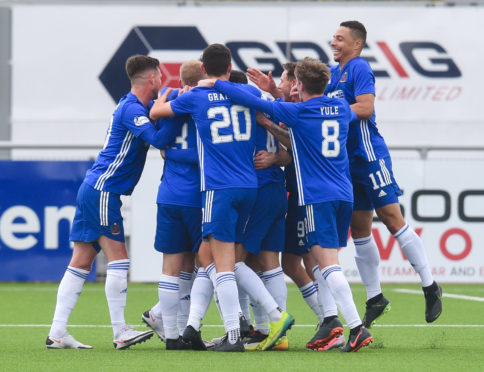The rise and rise of Cove Rangers has been the perfect example of why Scottish football so desperately needed a pyramid system.
Having romped through their debut campaign in the SPFL, Paul Hartley’s side have made a strong start in League One and there is good reason to believe they can go on to emulate last season’s exploits.
It wasn’t until five years ago that the door finally opened at the bottom of the senior set-up, Montrose preserving their status by narrowly defeating Brora Rangers, and in the seasons since, Cove and Edinburgh City have claimed places.
The team from the capital took longer to find their feet, but made the play-offs in 2019 and would have had an excellent chance of promotion had last season been played out; having pushed Cove for a large part of the campaign, they would have been clear favourites to win through.
Cove Rangers’ core stability key to rise up the SPFL, according to League One leaders’ Blair Yule
Among many controversial decisions during the early part of the summer, scrapping the League Two play-off was perhaps the most scandalous. Denying Brora or Kelty Hearts the opportunity to take on Brechin City was a distasteful throwback to the decades of self-preservation when the old boys’ network thwarted the dreams of ambitious clubs who might have made a much bigger contribution to the Scottish game.
It was a state of affairs that had existed almost since the formation of professional football in this country, and even after Third Lanark’s demise in 1967, it took league reconstruction seven years later for Meadowbank Thistle to be admitted.
It was a further two decades, and another shake-up of the leagues, before Inverness Caledonian Thistle and Ross County were voted in, followed six years later by Elgin City and Peterhead when the top-flight was expanded to 12 clubs.
The only other alteration to the set-up came when Annan Athletic replaced the liquidated Gretna in 2008.
In the space of half a century only six clubs were allowed to join; countless others saw their ambitions die despite having so much more to offer than incumbents who had limped along for decades.
Thankfully, that all changed in 2014-15, and it has brought a freshness and much needed excitement to the lower divisions, with Cove Rangers the obvious success story. Those in charge of the club had big dreams for years and they have finally been realised over the past 18 months or so.
It is a crying shame that they weren’t able to properly celebrate last season’s triumph, but promotion was the most important thing and, despite the efforts of Hearts and Partick Thistle, they have already proved how deserving they were of the step-up.
Rory McAllister’s last-minute goal against the Firhill side must have prompted a few wry smiles amid the excitement, and it maintained the club’s remarkable record at the Balmoral Stadium.
There have been a few close shaves but 16 straight league victories is an incredible run, and I would fully expect them to chalk up number 17 against Forfar this afternoon ahead of the mouth-watering trip to Falkirk in a fortnight.
